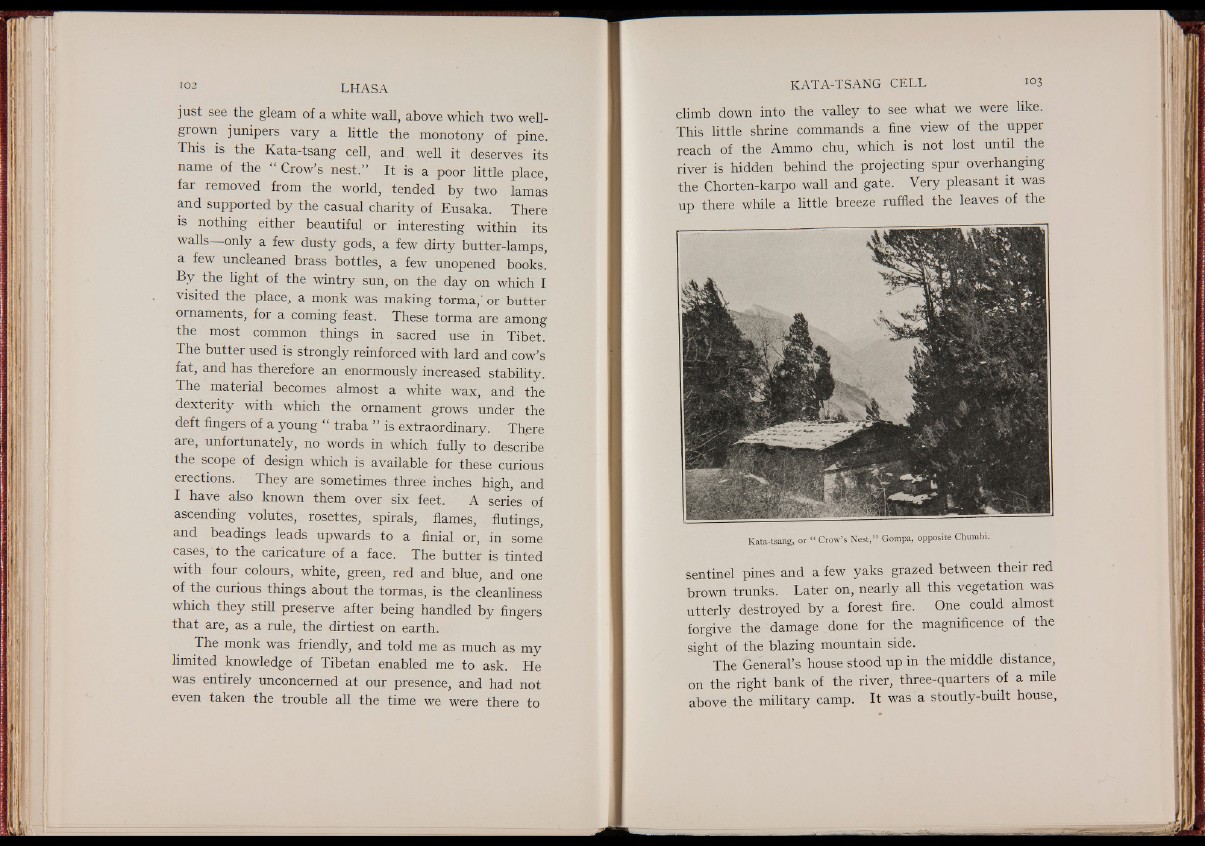
just see the gleam of a white wall, above which two well-
grown junipers vary a little the monotony of pine.
This is the Kata-tsang cell, and well it deserves its
name of the “ Crow’s nest.” It is a poor little place,
far removed from the world, tended by two lamas
and supported by the casual charity of Eusaka. There
is nothing either beautiful or interesting within its
walls only a few dusty gods, a few dirty butter-lamps,
a few uncleaned brass bottles, a few unopened books.
By the light of the wintry sun, on the day on which I
visited the place, a monk was making torma,’ or butter
ornaments, for a coming feast. These torma are among
the most common things in sacred use in Tibet.
The butter used is strongly reinforced with lard and cow’s
fat, and has therefore an enormously increased stability.
The material becomes almost a white wax, and the
dexterity with which the ornament grows under the
deft fingers of a young “ traba ” is extraordinary. There
are, unfortunately, no words in which fully to describe
the scope of design which is available for these curious
erections. They are sometimes three inches high, and
I have also known them over six feet. A series of
ascending volutes, rosettes, spirals, flames, flutings,
and headings leads upwards to a finial or, in some
cases, to the caricature of a face. The butter is tinted
with four colours, white, green, red and blue, and one
of the curious things about the tormas, is the cleanliness
which they still preserve after being handled by fingers
that are, as a rule, the dirtiest on earth.
The monk was friendly, and told me as much as my
limited knowledge of Tibetan enabled me to ask. He
was entirely unconcerned at our presence, and had not
even taken the trouble all the time we were there to
climb down into the valley to see what we were like.
This little shrine commands a fine view of the upper
reach of the Ammo chu, which is not lost until the
river is hidden behind the projecting spur overhanging
the Chorten-karpo wall and gate. Very pleasant it was
up there while a little breeze ruffled the leaves of the
Kata-tsang, or “ Crow’s Nest,” Gompa, opposite Chumbi.
sentinel pines and a few yaks grazed between their red
brown trunks. Later on, nearly ah this vegetation was
utterly destroyed by a forest fire. One could almost
forgive the damage done for the magnificence of the
sight of the blazing mountain side.
The General’s house stood up in the middle distance,
on the right bank of the river, three-quarters of a mile
above, the military camp. It was a stoutly-built house,